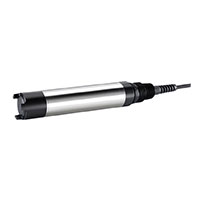
What is DO or water soluble oxygen?
DO Dissolved Oxygen Dissolved oxygen (DO) is a measure of the amount of oxygen in water – the amount of oxygen available to aquatic organisms. The amount of dissolved oxygen in a water stream or lake can contain a great deal of information about water quality.
Oxygen in water is dissolved Although water molecules contain one oxygen atom, this oxygen is not something that aquatic organisms live in natural waters. A small amount of oxygen, up to about ten molecules of oxygen per million water, actually dissolves in water. Oxygen enters the stream mostly from the atmosphere, and in areas where groundwater is discharged to large parts of the stream, it is discharged from groundwater. This dissolved oxygen is inhaled by fish and zooplankton and they need them to survive.
Dissolved oxygen and water quality
When water is moving fast, such as a small river or a large river, it contains a lot of dissolved oxygen, while stagnant water contains less. Bacteria in water can consume oxygen by breaking down organic matter. Therefore, excess organic matter in lakes and rivers can cause atrophic conditions, a condition of hypoxia that can cause “aquatic organisms” to die. “Aquatic life can be difficult in stagnant water that has a lot of decay, a lot of organic matter in it, especially in summer (dissolved oxygen concentration is inversely related to water temperature) in hard times,” when dissolved oxygen levels are at a high level. Be seasonal.
The water near the lake surface is very hot for them, while the water near the bottom of the lake has very little oxygen. Conditions may be particularly severe during periods of hot weather, resulting in the extinction of many fish. You may have heard of summer fish slaughter in local lakes that may be the cause of this problem.
DO dissolved oxygen in water, temperature and aquatic
As shown in the diagram, the concentration of dissolved oxygen in surface water is affected by temperature and has a seasonal and daily cycle. Cold water can hold more dissolved oxygen than hot water. In winter and early spring, when the water temperature is low, the concentration of dissolved oxygen is high. In summer and autumn, when the water temperature is high, the concentration of dissolved oxygen is often lower.
DO surface water soluble oxygen is used by all types of aquatic animals. Therefore, this ingredient is typically measured to assess the “health” of lakes and streams. Oxygen enters the stream from the atmosphere and drains groundwater. The contribution of oxygen from groundwater discharge is significant, however, only in areas where groundwater is a large component of the flow, such as areas of glacial sediments. Photosynthesis is the main process affecting the relationship between dissolved oxygen and temperature. Water clarity, strength, and duration of sunlight, in turn, affect photosynthesis.
Hypoxia and “dead areas”
You may have heard of the “Gulf of Mexico” in the Gulf of Mexico in parts of the Persian Gulf in southern Louisiana, where the Mississippi and Atchafalaya rivers drain. The Dead Zone is formed seasonally in the northern Gulf of Mexico, where dissolved oxygen is discharged into groundwater and can no longer support life. It forms west of the Mississippi Delta on top of Louisiana and sometimes extends to Texas. Oxygen depletion begins in late spring, increases in summer, and ends in autumn.
Groundwater formation Oxygen depletion has been associated with nutrient-rich depletion (nitrogen and phosphorus) from the Mississippi and Etchaphalia rivers. The available nutrients can stimulate the algal blooms that die and feed on the bacteria and release oxygen into the groundwater. The amount of oxygen in surface water with natural salinity in summer is usually more than 8 mg / l (8 mg / l). When the oxygen concentration is less than 2 mg / L, water is defined as hypoxic (CENR, 2000). Hypoxia kills many organisms that are unable to escape, so the hypoxic area is informally known as the “dead zone.”
The hypoxic area in the northern Gulf of Mexico is home to valuable fishing grounds. Increasing the frequency and expansion of oxygen-deficient areas has become an important economic and environmental issue for commercial and recreational fishery users.
Measurement of DO in water-soluble oxygen
Conditions and laboratories for measuring dissolved oxygen are long. As this picture shows, modern meters are small and very electronic. They are still using the probe, which is located at the end of the cable. Dissolved oxygen depends on temperature (an inverse relationship), so it must be calibrated before use for measurement.
Do you want to test the quality of your local water?
Water Test Kits from the World Challenge Water Monitoring (WWMC) is an international training and accessibility program that promotes public awareness and participation in the protection of water resources around the world. , So you can do your tests for temperature, pH , turbidity and dissolved oxygen.
Rose Calibration Company in Melbourne, Australia with over ten years of experience provides all calibration, maintenance, and repair services throughout Australia. If you live in Sydney, Melbourne, Adelaide, Perth, Geelong, and Brisbane, you can receive your quote in less than two hours by fill-up the form via the “Booking” link.

